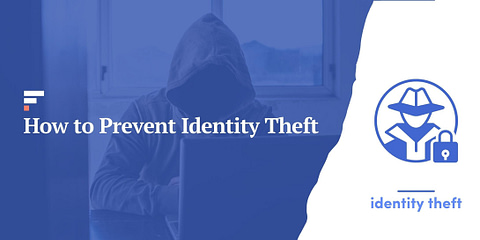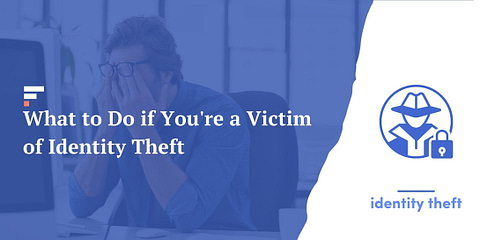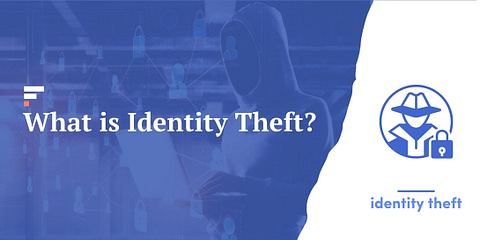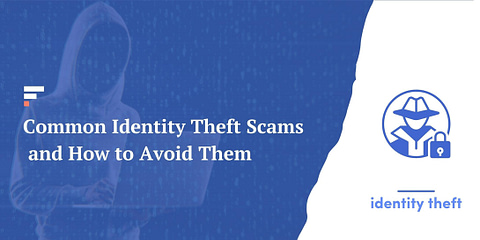It turns out that The Office’s Dwight Schrute was right. Identity theft is not a joke, and millions of families experience it every year. In 2021, 42 million United States consumers were victims of identity fraud, resulting in total losses of $52 billion[1].
Fortunately, catching identity theft early on can significantly reduce the damage from your information being exposed. Here’s what you should know about detecting the signs of identity theft, plus some of the best ways to prevent it.
How Does Identity Theft Happen?
Identity theft refers to any incident where a third party steals your personal data and uses it for financial gain. While there are countless ways for thieves to get hold of your information, they generally fall into one of two categories:
- Traditional identity fraud: These tactics involve physically or digitally stealing your data without contacting you directly. If you’re ever a victim, you may never find out how the thief obtained your information.
- Identity fraud scams: This approach involves directly contacting you and tricking you into giving up sensitive information. As a result, you should know when the thief stole from you and what details they have.
Traditional strategies include stealing documents from your mailbox, trash, or wallet, taking advantage of data breaches, and attaching skimmers to electronic card readers that record your payment details when you swipe.
Identity fraud scams often involve contacting you through the phone, email, or social media and conning you. They might try to convince you to give up your information by promising you a prize, threatening you with arrest, or posing as an attractive individual and expressing romantic interest in you.
🛑 This is far from a comprehensive list of ways that thieves can steal your information. It’s impossible to learn all the fraud permutations, but it’s worth reviewing the most common to recognize the pattern better.
Early Signs of Identity Theft
Identity theft can take a long time to notice if you’re not proactively looking for it. Unfortunately, every day the issue goes undetected, the more likely the damage will be significant and take longer to fix.
As a result, you must learn the most common signs of identity theft to catch the problem as early as possible. Here are some of the primary red flags.
1. Unauthorized Account Activity
One of the ways people frequently discover identity theft is by finding transactions they don’t recognize in their credit card or bank account statements. That’s a sign someone has gained access to your account and is using it to make unauthorized purchases or withdraw funds.
⚠️ The amounts won’t necessarily be significant at first. Thieves often start by making smaller purchases to test the accuracy of their information and confirm that they can complete transactions with your account.
2. Unfamiliar Accounts in Credit Reports
Another way people often discover they’ve suffered from identity theft is by finding strange accounts in their credit reports. That’s because one of the most popular ways thieves profit off your personal information is to create credit accounts in your name.
For example, they might steal your information by going through your trash and finding one of your credit card statements, then use it to apply for a new card. They’d then max out the account and vanish, leaving you to deal with the bill.
3. Missing Bills
Whether you receive your monthly bills through email or snail mail, identity thieves that access your accounts may redirect your correspondence to an address they can access. If you haven’t received a copy of one or more bills in recent months, it may indicate someone is trying to steal your identity.
If thieves get ahold of your bills, they may be able to use the information in them to commit identity fraud. Alternatively, they may be trying to hide their own activity while they’re racking up charges on the compromised account.
4. Unfamiliar Bills or Correspondance
I don’t consider this an “early” sign of identity theft, but it’s still worth mentioning. If you get bills for expenses you don’t recognize, unexpected calls from debt collectors, or letters about unfamiliar activities, it’s very likely someone has stolen your identity.
Keep in mind that there are many ways this can manifest, including some you might not expect. For example, thieves may use your information to claim unemployment benefits, get healthcare services that are billed to you, or open utility accounts.
Unfortunately, this often means that the issue has progressed significantly. As a result, you should never ignore a letter or a bill you don’t recognize because you think it’s just a mistake or a mix-up.
5. Inability to File Your Tax Return
One of the increasingly common ways identity thieves profit from stolen information is by filing fraudulent tax returns and stealing refunds. Many people find out about this when they file their return and get rejected because someone already submitted one using their Social Security Number.
Alternatively, you may receive unexpected correspondence from the Internal Revenue Service (IRS). That could be a letter asking questions about a potentially fraudulent return, a tax transcript you didn’t request, or a notice stating someone created an online account with the IRS in your name.
📗 Learn More: Filing your taxes can be intimidating, especially if it’s your first time. If you need help, check out our comprehensive guide: Filing Taxes for the First Time? Here’s What to Do!
6. Company Data Breaches
Unfortunately, even if you do everything you should do to protect your identity, you’re not the only party identity thieves can target to steal your information. Your data is a hot commodity, and companies hoard as much of it as possible these days.
If a business with your data suffers a breach, you may be exposed through no fault of your own. Legally, organizations are required to notify you of these incidents. If you receive notice that your information is compromised, it’s definitely a sign you need to take action to avoid victimization.
How to Check for Identity Theft
You should always do your best to prevent identity theft before it happens, but sometimes it’s unavoidable. As a result, checking to see if you’ve been a victim of identity theft is something you should do regularly.
Given the signs of identity theft I mentioned above, some of the best ways to check for identity theft are:
- Review your bank account and credit card statements for unfamiliar activity
- Check your credit reports for tradelines you don’t recognize
- Monitor your correspondence to make sure nothing’s missing or unexpected
- Watch for data breaches at companies that may have your data
It’s not a substitute for looking for signs of identity theft yourself, but identity theft monitoring services can make finding potential red flags easier. After all, it’s unlikely that you’ll be checking for all of the issues noted above daily.
However, these services typically aren’t free and have limitations, including an inability to detect all of the ways your identity could become compromised. As a result, while they can be helpful in some circumstances, they’re not beneficial for everyone.
How to Prevent Identity Theft
Unfortunately, nothing you do can guarantee that you won’t suffer from identity theft. As a result, you always have to keep a watchful eye out for signs that someone has stolen your identity.
However, there are ways to greatly diminish the chances that someone will acquire your personal information. Here are some best practices you should consider.
Secure Your Online Activities
With the world becoming increasingly digital, it’s more important than ever that you learn to protect yourself while operating online. Nothing is ever ironclad, but you can significantly bolster your defenses by taking steps like the following:
- Use strong, unique passwords for each account and website
- Enable two-step verification using your phone or an authenticator app
- Use antivirus software and keep it up to date
- Learn not to click on links that might be unsafe
- Monitor your social media data and privacy settings
- Avoid public wifi or use a virtual private network
Again, it’s impossible to eliminate the risk that someone will steal your data online while taking advantage of all the internet offers. However, you can reduce your vulnerability with these precautions. If you haven’t in a while, spend some time brushing up on internet safety.
Practice Good Habits in the Real World
Unfortunately, there are just as many opportunities for thieves to steal from you in person as online. Here are some ways you can minimize your vulnerability as much as possible:
- Sign up for electronic billing statements
- Secure your snail mail with a P.O. Box or drop-in mailbox
- Buy a shredder and destroy documents before throwing them away
- Avoid carrying sensitive data on your person
- Get a safe to store documents like passports in your home
- Check for skimming devices or use mobile payment apps instead of cards
It’s hard to eliminate all physical copies of your sensitive information. After all, you need hard copies of things like your driver’s license and passport, and most people are unwilling to dispose of their credit and debit cards. However, reducing your reliance on physical data will often help protect you against identity theft.
Cultivate a Skeptical Mindset
Taking steps to guard your personal information in the physical and digital worlds is essential to minimizing your exposure to identity theft, but it’s not sufficient. It doesn’t do anything to protect one of the most vulnerable points in your security: yourself.
As identity theft protections improve, thieves are increasingly scamming consumers directly rather than hacking into their accounts or digging through their trash for information.
Educating yourself on the tactics they use is helpful, but you’ll never be able to learn about them all. There are countless strategies already, and scammers invent more every day.
As a result, your best defense against these con artists is to build a habit of being suspicious whenever someone wants access to your information. It should be an automatic reflex, even when you’re dealing with someone you’re confident is legitimate.
📗Learn More: As the old saying goes, an ounce of prevention is worth a pound of cure. Check out our favorite tips for preventing identity theft before it happens: 12 Essential Steps to Prevent Identity Theft.
Take Action If You See Signs of Identity Theft
If you’ve seen warning signs that indicate someone may have stolen your identity, take action immediately. Remember, identity theft issues usually take longer and cost more to resolve the longer they go unaddressed. You can read more about what to do if you are a victim of identity theft here.
For assistance with the recovery process, visit IdentityTheft.gov. It’s a federal resource that lets you report the details of your incident to the proper authorities, then creates a personalized recovery plan and walks you through each step.











